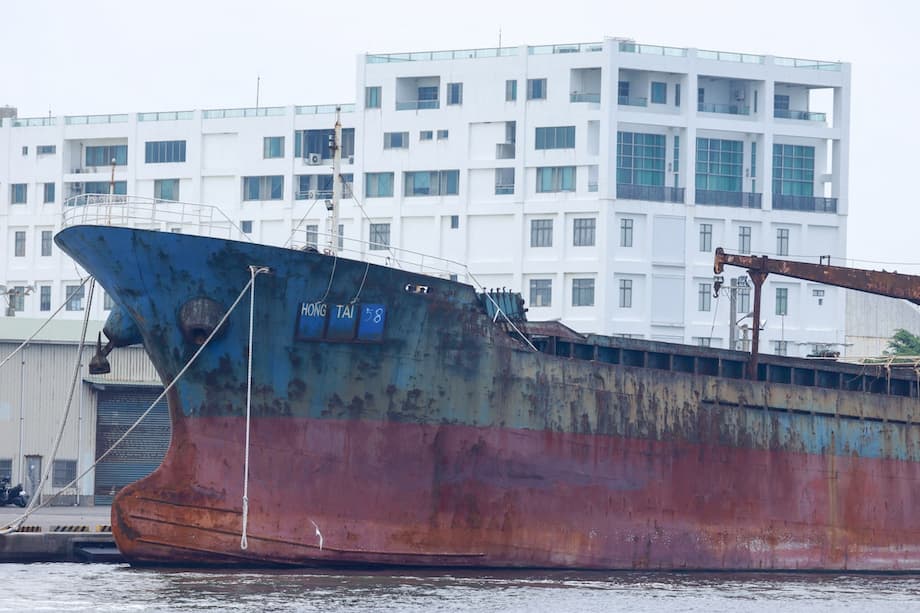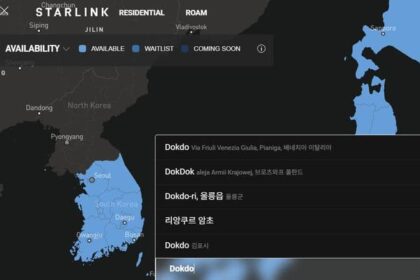Patrols target a new front in gray zone pressure
Taiwan has intensified maritime patrols to protect the fiber optic cables that keep the island connected to the world, elevating a little seen contest on the seabed into a daily security priority. Coast guard crews now run continuous patrols around high risk routes in the Taiwan Strait after a string of cable cuts that Taipei links to China’s gray zone tactics, activities calibrated to wear down defenses while stopping short of open conflict. The effort has zeroed in on TP3, one of roughly two dozen cables that serve Taiwan’s domestic and international connectivity, and a symbol of why the seabed has become a new front in cross strait pressure.
- Patrols target a new front in gray zone pressure
- Why Taiwan’s seabed cables matter
- From suspicious ships to court convictions
- How Taiwan is watching the seabed
- What counts as sabotage
- A wider campaign from the Baltic to the Pacific
- Can law and partners close the gaps
- Technology and resilience plans
- Key Points
On an August 28 patrol witnessed by reporters, Captain Juan Chung ching guided his 100 ton vessel, fitted with water cannons and an autocannon, over TP3’s path and past ships loitering at low speed. TP3 drew special scrutiny after a Chinese captain was found guilty this year of deliberately severing it, a case that turned a niche infrastructure threat into headline news. Patrol leaders describe the missions as resource intensive yet essential. Crews scan for slow moving vessels near cable routes, issue radio warnings, and shadow ships that ignore requests to keep clear.
The coast guard has expanded surveillance with an alert system that flags ships moving within about 1 kilometer of TP3 at low speed and a network of radar stations whose operators help filter targets of interest. Teams now watch a blacklist of 96 China linked boats, many using flags of convenience, and they track nearly 400 other China linked vessels, including cargo ships that officials worry could be converted for military use. The patrol area’s eight boats and nearly 500 officers still handle rescues and maritime law enforcement, a workload that commanders say is stretched thin.
Captain Juan said repeated incursions and cable disruptions have eroded confidence at home, describing them as a steady drain that forces Taiwan to respond constantly. After his unit escorted the Chinese crewed freighter Hong Tai 58 for investigation hours after TP3 went offline in February, he said the task had become a top priority.
“Their incursions have severely undermined the peace and stability of Taiwanese society. We are stepping up patrols in this area, monitoring for any vessels engaging in disruptive or destructive activities.”
Lin Fei fan, Deputy Secretary General of the National Security Council, said Taiwan’s geography and cable density make it especially exposed. He pointed to clusters of cable crossings close to China and near busy shipping lanes, areas where an errant anchor or a deliberate cut can create ripple effects.
“Taiwan ranks among the top countries facing this issue. We are very close to China and many densely populated submarine cable areas are highly vulnerable to damage.”
Beijing rejects the accusation that it is using civilian vessels to harass Taiwan at sea. China’s Taiwan Affairs Office has said Taipei is manipulating claims before facts are clear and argues that many cable failures result from routine maritime activity or accidents.
Why Taiwan’s seabed cables matter
Submarine fiber lines carry well over 95 percent of international internet traffic. For Taiwan, an export driven economy that anchors critical parts of the global semiconductor supply chain, those lines are the digital lifelines for everything from chip design to banking, logistics, telemedicine, military coordination and emergency alerts. About two dozen cables serve the island and its offshore communities, including at least a dozen that link internationally to the United States, Japan, South Korea and China. Redundancy limits the impact of a single fault because traffic can be rerouted to other systems, yet repeated cuts can slow service, raise costs and, in extreme cases, isolate regions.
How outages ripple through daily life
Damage to a single cable rarely causes a full blackout, since operators reroute traffic across alternative paths. The experience of the Matsu islands in 2023, when two links were cut and the 14,000 residents struggled with degraded service, shows the practical strain. Satellite and microwave backups can keep essential services running, yet capacity is limited and latency rises, so video calls, cloud access and some financial transactions lag. Repairs often take weeks because specialized ships must sail to the site, locate the fault, lift the cable to the surface, perform splices, then test the link, all while navigating rough seas and safety restrictions in contested waters.
Accidents are common on the seabed. Industry groups report roughly 200 cable faults a year worldwide, most caused by fishing trawls or anchors dragged across the bottom. Earthquakes and seabed slides can cause breaks too. That background noise makes proof of deliberate sabotage difficult. Investigators need vessel tracks, physical evidence on the cable sheath, and often cooperation from foreign ports to inspect suspect ships. When incidents cluster near sensitive routes and involve vessels with unusual behavior or opaque ownership, security officials see a pattern that is consistent with coercion even when courtroom proof is hard to secure.
From suspicious ships to court convictions
Taiwan’s most high profile case this year involved the freighter Hong Tai 58, crewed by Chinese nationals. Authorities said the ship was operating under shifting identities. It was escorted for investigation in February, hours after TP3 went offline. A court later convicted the captain of intentionally damaging undersea infrastructure and imposed a three year prison sentence, the first such ruling in Taiwan. The judgment signaled that prosecutors and judges are prepared to treat cable cuts as a criminal act when evidence supports intent.
Another incident in early January off northern Taiwan highlighted the practical limits of enforcement. Chunghwa Telecom alerted the coast guard after an international cable was damaged near Keelung. Taiwan tracked a Hong Kong owned freighter known as Xing Shun 39, at one point under a Cameroon flag, and said its movement was erratic. Weather prevented a boarding at sea. Taiwan asked South Korean authorities in Busan to collect evidence after the ship arrived, illustrating how cross border cooperation can be pivotal to any case.
Investigators say hostile operators hide behind layers of deception. Many ships use flags of convenience registered to third countries, shell companies that mask ownership, or they change names and call signs. Some deactivate tracking systems and loiter at slow speed near cable routes. Legal scholars describe this as civil exploitation lawfare in maritime form, a way to weaponize legal ambiguity while keeping state links murky.
What Taiwan’s coast guard says it sees
Commanders patrolling near TP3 describe the vessels that worry them most as old cargo ships and trawlers that can do serious damage with simple gear. Jenson Chien, who leads a coast guard flotilla in the area, said the cost equation favors the saboteur. A low value ship with a heavy anchor or dredging gear can disable a cable that costs millions of dollars per kilometer to manufacture and lay.
“Those ships are like cannon fodder, piles of scrap metal. They employ minimal resources to disrupt and sever our connections, sowing unrest throughout Taiwanese society.”
How Taiwan is watching the seabed
The coast guard now runs 24 hour patrols near the TP3 route and other sensitive corridors. An alert system spots vessels that get within roughly 1 kilometer of cables at slow speed, then operators at radar stations flag tracks that merit a closer look. Radio warnings come first, followed by physical presence if a ship ignores requests to move. In high risk cases, cutters maneuver between vessels and cable routes to force separation.
Officials have paired the patrols with technology and legal steps. Taiwan is expanding the Submarine Cable Automatic Warning System, a digital fence that helps authorities and cable operators map where ships approach seabed infrastructure. Security officials say Taiwan shares the live locations of blacklisted or watched vessels with friendly capitals. A senior official said Taiwan will seek to board suspect ships that enter within 24 nautical miles of its coast, a policy intended to deter loitering near cable crossing zones. Many at risk ships are small, yet authorities are also watching hundreds of larger China linked cargo vessels that could be adapted for military use in a crisis.
The mission strains manpower. The same officers who guard cable routes also rescue fishermen, chase smugglers and enforce maritime law. Taiwan’s watchlist of 96 China linked boats and nearly 400 more ships of concern changes often as vessels switch flags and routes. That churn complicates tracking and demands sustained intelligence exchanges with partners.
Legal and operational limits
The law governing the sea, the United Nations Convention on the Law of the Sea (UNCLOS), sets rights and responsibilities but offers thin enforcement tools for cable protection. Cables in international waters are hard to defend unless a saboteur is caught in the act. The Taiwan Strait is one of the busiest waterways in the world and an arena where both sides contest authority. Taiwan can board ships in its contiguous zone, up to 24 nautical miles, yet attempts to stop or inspect foreign vessels near contested waters risk confrontation. Proving intent remains the hardest part of any prosecution.
What counts as sabotage
Analysts caution that deliberate attacks and accidents can look similar. A trawl net can slice a cable as cleanly as a saw if the angle and seabed conditions line up. The difficulty of forensic work at depth, combined with a global average of hundreds of faults a year, gives deniability to any actor that wants to push boundaries. Even so, security assessments published this year say there is a better than even chance China will keep testing Taiwan’s defenses around cable routes. Taipei has accused Chinese linked ships of causing several cuts since 2023, a jump from the previous three years, and sees those incidents within a wider pattern of espionage, influence operations, military drills and cyber activity.
A wider campaign from the Baltic to the Pacific
Europe has faced its own seabed scares. In late 2024, two fiber optic cables in the Baltic Sea were damaged, and Nordic governments scrutinized a Chinese owned freighter that had transited from a Russian port. Around the same period, investigators probed a Russian linked tanker suspected of dragging its anchor across power and telecom links. A year earlier, a Chinese flagged ship traveling from Russia was tied to a gas pipeline rupture. NATO navies have since stepped up patrols of critical infrastructure in the Baltic under a plan called Baltic Sentry, adding frigates, patrol aircraft and naval drones to monitor cables and pipelines while reserving the right to interdict ships that pose a threat.
Shared tactics across regions
Across both theaters, officials describe common methods. Suspect ships hide in busy lanes, run at unusual speeds or courses, and sometimes switch off tracking beacons. Ownership often traces to opaque companies. Western investigators rarely make direct attributions without physical proof, yet the pattern of activity has raised alarms in capitals from Taipei to Helsinki. Taiwan’s blacklist and intelligence sharing are part of a growing international practice that mirrors European efforts to document ship behavior, conduct boardings where legal, and encourage cable operators to harden landing sites and improve anomaly detection.
Can law and partners close the gaps
Legal experts and former officials argue that cable security needs a broader coalition response. Proposals include a maritime security group focused on cable routes, clearer liability and penalties for reckless operations near cables, and stronger transparency rules for ship ownership and tracking. Advocates want to close loopholes that allow ships to hop between flags and identities with limited scrutiny. They also call for faster evidence sharing when a vessel of concern transits multiple jurisdictions, so prosecutors can piece together intent and hold owners and captains accountable.
There is also a diplomatic angle. Governments could use sanctions or port state controls on companies whose ships repeatedly loiter in cable zones and refuse lawful inspections. A public reporting regime that names the worst offenders, backed by satellite data and cable operator records, would raise the cost of gray zone behavior. Taiwan already shares real time positions of suspect vessels with friendly partners and says like minded capitals are helping watch for ships that might head from the Strait to distant ports where evidence can be collected.
Technology and resilience plans
Navies and industry are racing to improve undersea situational awareness. Companies promote seabed sensor networks that can detect anchors or gear scraping near cables, plus autonomous underwater vehicles that can patrol, verify cable integrity and assist repairs. New underwater drones can dive thousands of meters, reprogram tasks mid mission and relay alerts to shore in near real time. Sensor grids marketed under names like Blue Sentry aim to stitch together acoustic, magnetic and optical cues to track threats that traditional radar and AIS might miss.
Military leaders in the region say adversaries have tried to sabotage cables around Taiwan. U.S. Indo Pacific Command has called for better intelligence collection to detect and disrupt attempts and for investing in redundancy that keeps communications flowing if multiple lines go down. Reports in trade media have also flagged Chinese patents for devices that can cut fortified cables at depth, a reminder that technology is advancing on both sides of the cat and mouse contest.
Taiwan is moving on resilience as well as enforcement. Lawmakers have raised penalties for damaging critical infrastructure and are pursuing further legislation focused on seabed cable protection. The government is expanding the Submarine Cable Automatic Warning System and tightening inspections of foreign vessels inside 24 nautical miles. Agencies are exploring more diverse landing points to reduce route risk and are testing low Earth orbit satellite services as a backup for essential links. Cable operators say they have refined traffic rerouting plans to keep the core of the economy and public services online even during repair cycles.
Key Points
- Taiwan has expanded 24 hour patrols near sensitive cable routes, with alert systems that flag slow moving ships within about 1 kilometer of key lines.
- Authorities blacklisted 96 China linked vessels and are monitoring nearly 400 more amid concern about flags of convenience and opaque ownership.
- A Taiwanese court convicted the captain of Hong Tai 58 for intentionally severing the TP3 cable and issued a three year sentence.
- Another suspected case in January involved a Hong Kong owned freighter off northern Taiwan; bad weather prevented a boarding and evidence was sought in Busan.
- Beijing denies any role and says many cable cuts result from routine maritime accidents.
- Industry data show about 200 cable faults worldwide each year, mostly caused by fishing gear and anchors, which complicates proof of sabotage.
- NATO and Nordic states boosted Baltic Sea patrols after multiple cable and pipeline disruptions, while Taiwan and partners share intelligence on suspect ships.
- Legal specialists say UNCLOS offers limited enforcement, urging tighter rules on ship ownership transparency and operations near cables.
- Defense and industry groups are fielding seabed sensors and underwater drones to detect threats and speed repairs.
- Taiwan is upgrading its warning systems, tightening inspections within 24 nautical miles, considering new landing points and testing satellite backups.












